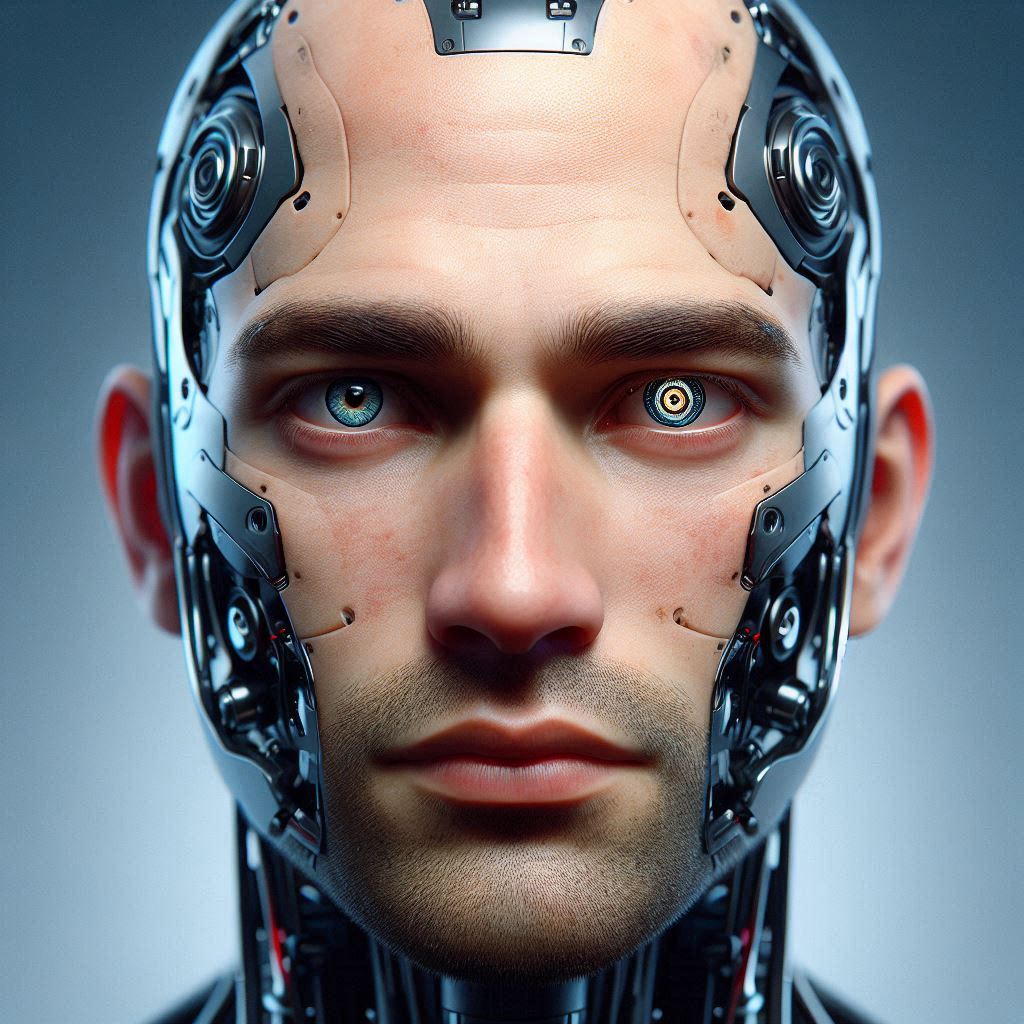The Uncanny Valley
Humanity's Unease with Near-Humanity
Jump to the Article

The "uncanny valley," a term coined by roboticist Masahiro Mori, describes the unsettling feeling humans experience when encountering entities that appear almost, but not quite, human. As robots, simulacra, cyborgs, and AI advance, blurring the lines between artificial and natural, this phenomenon raises profound philosophical questions. If these creations become indistinguishable from humans, where do we draw the line between person and machine? This leads to a disquieting exploration of identity, authenticity, and the very nature of consciousness, compelling us to confront the ethical and existential implications of our technological aspirations with a sense of responsibility and engagement.
The Origins of Unease
- Masahiro Mori's Hypothesis:
- In 1970, Japanese roboticist Masahiro Mori introduced the concept of the "uncanny valley." He proposed that as robots become more human-like, our affinity for them increases—until a point. Beyond this point, even slight imperfections in their human resemblance cause a sharp drop in our emotional response, resulting in feelings of unease or revulsion.
- This "valley" represents the region where almost-human entities become unsettling.
- Psychological and Evolutionary Roots:
- Researchers have proposed various explanations for this phenomenon. Some suggest it stems from our evolutionary instinct to detect anomalies that could indicate disease or a threat.
- Others point to the cognitive dissonance that arises when we encounter entities that trigger our human recognition systems but fail to fully satisfy them.
- The feeling of something being "off" triggers a deep seated feeling of wrongness.
Philosophical Dilemmas
The uncanny valley raises profound philosophical questions about:
- The Nature of Humanity:
- As AI and robotics advance, the lines between human and machine blur. This forces us to confront the question of what truly defines humanity. Is it physical appearance, behavior, consciousness, or something else entirely?
- What are the ethical implications of creating something that is so close to human, but not fully human?
- Identity and Authenticity:
- In a world of increasingly sophisticated simulacra, how do we distinguish between genuine human experience and artificial imitation?
- The concept of authenticity becomes increasingly complex, challenging our notions of self and identity.
- Ethical Considerations:
- The development of human-like AI and robots raises ethical concerns about their potential treatment and rights.
- If these entities possess a degree of consciousness or sentience, do we have a moral obligation to them?
- The potential for the dehumanization of both real humans, and artifical humans is a serious concern.
- The Future of Human-Machine Interaction:
- How will we navigate our relationships with increasingly human-like machines?
- Will they become partners, companions, or something else entirely?
- How will this change the nature of human relationships?
The Uncanny Valley in the Age of AI
The rise of AI has amplified the relevance of the uncanny valley. AI-generated images, videos, and even voices can now achieve a level of realism that was once unimaginable. This has profound implications for:
- Media and Entertainment:
- The use of AI-generated characters and virtual humans raises questions about authenticity and the potential for manipulation.
- Social Interactions:
- As AI-powered chatbots and virtual assistants become more sophisticated, they could blur the lines between human and machine interaction.
- The Spread of Misinformation:
- Deepfakes and other AI-generated media pose a serious threat to the spread of misinformation and the erosion of trust in digital information.
Conclusion
The uncanny valley is not simply a technical challenge to be overcome. It is a profound reflection of our anxieties and aspirations regarding the future of technology and its impact on our humanity. As we continue to push the boundaries of AI and robotics, we must grapple with the ethical and philosophical implications of our creations, ensuring that we navigate this uncharted territory with wisdom and foresight.
Sources to Explore
- "Scientists identify possible source of the 'Uncanny Valley' in the brain" - University of Cambridge Research.
- "uncanny valley" by Emily Kendall. Britannica.
- "Social Robots and Empathy: The Harmful Effects of Always Getting What We Want" by Camylle Lanteigne. Montreal AI Ethics Institute.
- "What is the Uncanny Valley – How to Use It and How to Avoid It in Film" by Studio Binder. Youtube.
- "Uncanny valley as a window into predictive processing in the social brain " by Burcu A Urgen, Marta Kutas, Ayse P Saygin. National Library of Medicine.
- "What to Know About The Uncanny Valley" by Kendra Cherry, MSEd. Verywell Mind.
- "The Evolution of Robots: The Blurring Lines Between People and Machines" by Thomas Frey. Futurist Speaker.
- "The potentially dangerous implications of an AI tool creating extremely realistic video" by William Brangham and Karina Cuevas. PBS News.
- "Policymakers Should Further Study the Benefits and Risks of AI Companions" by Alex Ambrose. ITIF: Information Technology and Innovation Foundation.
- "Chatbot and Virtual Assistants: Research Partners that Work 24/7 and Never Get Tired" by Ashley Shedlock. Greenbook.
- "Content Credentials: Strengthening Multimedia Integrity in the Generative AI Era" - Australian Signals Directorate.
